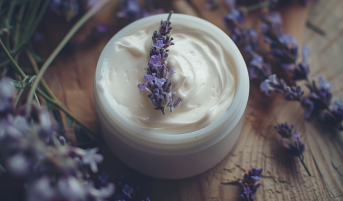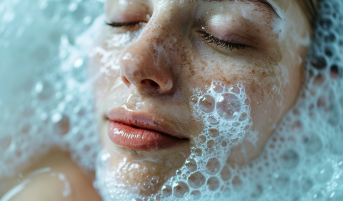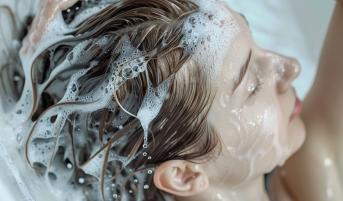Comparing Dead Sea Salt and Oatmeal Baths

When it comes to self-care, therapeutic baths have surged in popularity due to their potential health benefits. Among the variety of options, Dead Sea salt and oatmeal baths are highly sought after. Both offer unique advantages for skin health and can provide a relaxing experience. Let’s delve into the properties and benefits of these two types of baths, and how they can be included in your wellness routine.
Key Takeaways
Certainly! Here's the continuation with clear categorization:
- Historical Significance: A remedy for soothing irritated skin, used since 2000 BC.
- Composition: Dead Sea Salt: Features magnesium, calcium, and potassium for skin health.
- Oatmeal Baths: Utilise finely ground colloidal oatmeal for gentle exfoliation.
- Dead Sea Salt Baths:
- Improves skin conditions like psoriasis, eczema, and acne.
- Detoxifies and improves skin circulation.
- Oatmeal Baths:
- Soothes dry, itchy, or irritated skin.
- Recommended for eczema, chickenpox, and sunburn relief
- Dead Sea Salt Baths:
- Add 1-2 cups of Dead Sea salt to warm bath water.
- Soak for 20-30 minutes.
- Oatmeal Baths:
- Add 1 cup of colloidal oatmeal to warm bath water.
- Soaking time of 10-15 minutes is recommended.
- Frequency:Both bath types are generally recommended once or twice a week, tailored to individual skin sensitivity.
- Precautions:Begin with smaller quantities to minimise irritation risk. Consult healthcare providers as needed for both bath types.
- Combinations:Dead Sea salt and oatmeal can be mixed for combined skin benefits.Ensure compatibility with individual skin sensitivities for best results.
Therapeutic baths, particularly Dead Sea salt and oatmeal baths, offer a variety of skin health benefits. Below is a table summarising the advantages, preparation methods, and potential precautions for each type of bath:
Dead Sea Salt Baths: These have been utilised since ancient times due to their mineral-rich properties.
History of Therapeutic Baths
Therapeutic baths have been used for centuries as a means to promote healing and relaxation. The use of Dead Sea salt for health and wellness dates back to ancient times, with historical figures such as Cleopatra famously endorsing the mineral-rich waters of the Dead Sea. On the other hand, oatmeal baths have been a traditional remedy for soothing irritated skin, with their usage being documented as early as 2000 BC.
Dead Sea Salt Baths
What is Dead Sea salt? Dead Sea salt is a mineral-rich salt obtained from the Dead Sea, located between Jordan and Israel. Unlike regular sea salt, it contains a higher concentration of minerals, such as magnesium, calcium, and potassium.
Benefits of Dead Sea Salt Baths: include:
- Mineral composition and health benefits: These minerals are known for their therapeutic effects, including relaxation of muscles and joints, improvement of blood circulation, and detoxification properties.
- Skin conditions that can be improved: People suffering from psoriasis, eczema, and acne have often reported relief after regular Dead Sea salt baths.
Oatmeal Baths
What is an Oatmeal Bath? Simply put, it's a bath where colloidal oatmeal, which is oatmeal ground into a fine powder, is dissolved in water, creating a soothing milky bath.
Benefits of oatmeal baths include:
- Soothing properties and skin benefits: Oatmeal baths have anti-inflammatory and moisturising properties, making them ideal for soothing dry, itchy, or irritated skin.
- Conditions that can be treated with oatmeal baths: They're often recommended for individuals with eczema, chickenpox, and sunburns for their calming effect on the skin.
Key Differences
| Aspect | Dead Sea Salt Bath | Oatmeal Bath |
| Mineral Content | High mineral content, notably magnesium, calcium, potassium | Primarily composed of starches and beta-glucan |
| Skin Benefits | Helps with skin detoxification and improves circulation | Soothes and protects the skin, reducing inflammation |
| Recommended Usage | Beneficial for skin detoxification and muscle relaxation | Recommended for skin sensitivities and dry, itchy skin conditions |
How to Prepare Your Bath
To prepare a Dead Sea salt bath, follow these steps:
- Fill your tub with warm water.
- Add 1-2 cups of Dead Sea salt and stir until mostly dissolved.
- Soak for 20-30 minutes, then rinse off if desired.
Preparing an oatmeal bath is just as easy:
- Grind oatmeal in a food processor or blender to create a fine, colloidal powder.
- Fill the bathtub with warm water.
- Add the colloidal oatmeal (about 1 cup) to the bath as it's filling to ensure even distribution.
- Soak for 10-15 minutes, then pat dry without rinsing.
Potential Side Effects and Precautions
While both types of baths have many benefits, it's important to be aware of when to avoid them and potential side effects such as:
- Skin irritation: If you have sensitive skin, start with a smaller amount of Dead Sea salt or colloidal oatmeal to check for any adverse reactions.
- Health conditions: Consult with a healthcare provider if you have any pre-existing conditions before starting any new bath regimen.
Case Studies and Testimonials
Many individuals have shared their positive experiences with these baths. For instance, some Dead Sea salt bath enthusiasts claim a noticeable improvement in their psoriasis symptoms. Similarly, numerous oatmeal bath users report significant relief from eczema flare-ups and skin sensitivity.
Understanding the distinctive properties and benefits of Dead Sea salt and oatmeal baths can help you make an informed decision on which is more suitable for your needs. Both can enhance your wellness routine, offering relaxation and skin health benefits. The choice ultimately comes down to personal preference and specific skin conditions.



